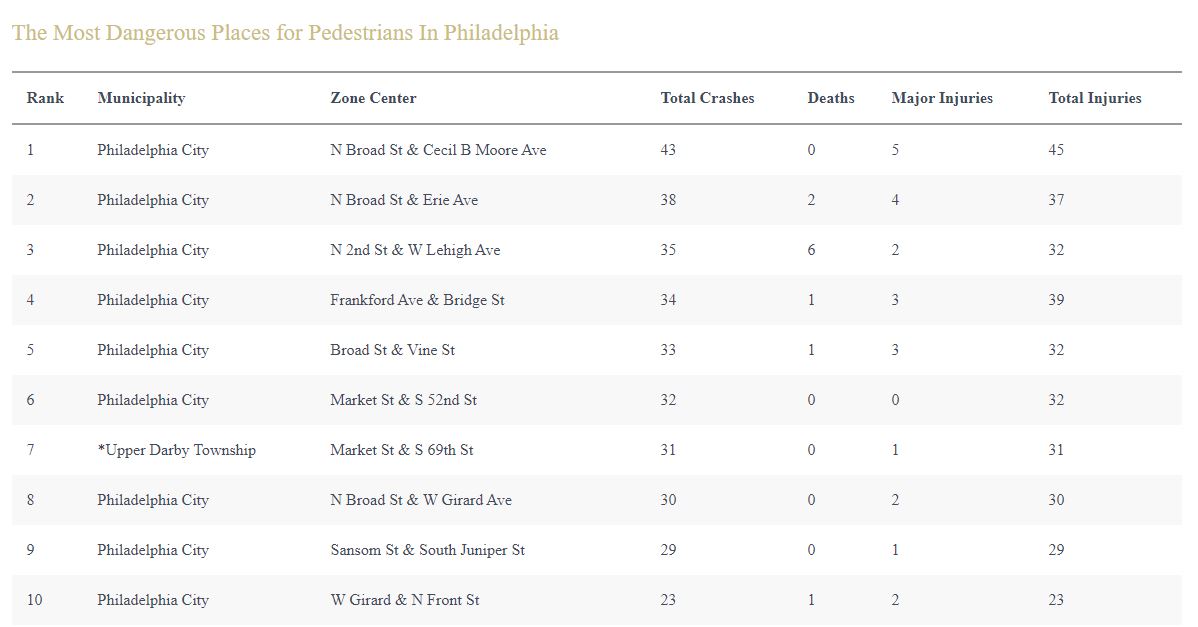Pedestrian safety is tantamount on roadways in Pennsylvania. Pedestrians have no protection against the force of a vehicle slamming into them. That is why pedestrian crosswalk laws are so essential to safety. Drivers need to know when pedestrians have the right of way.
General Pedestrian Crosswalk Laws
The following are laws passed by the state legislature regarding pedestrian crosswalk safety:
- If there are no traffic control signals in place or in operation, vehicle drivers must yield the right of way to a pedestrian crossing a roadway within a marked crosswalk or within an unmarked crosswalk at an intersection.
- Pedestrians cannot suddenly leave a curb or other place of safety and walk or run into the path of a vehicle that is close enough to present a hazard.
- If a vehicle is stopped at a crosswalk at an intersection or any marked crosswalk to where pedestrians are permitted to cross the roadway, the drivers of any vehicle approaching from the rear shall not pass and overtake the stopped vehicle.
Drivers who violate pedestrian crosswalk laws will have committed a summary offense (as opposed to a misdemeanor or felony) and be subject to pay a fine of $50.
If I’m At Fault, Am I Still Able To Receive Compensation?
Pedestrian injuries in the aftermath have an accident with a vehicle can be severe. When a vehicle driver is at fault, the pedestrian should be able to recover compensation through an insurance settlement or a personal injury lawsuit. However, there may be times when a pedestrian is also at fault for an accident, just ask our Philadelphia accident attorneys.
There are certainly times when it is clearly a vehicle driver’s fault in a pedestrian accident. For example, if a driver fails to stop at a marked pedestrian crosswalk and strikes a driver, they will likely be found to be at fault. However, pedestrians are also expected to exercise a reasonable level of care given the circumstances of the roadway. Pedestrians cannot simply run out into the road at unmarked areas and expect to be blameless in the event they are struck by a vehicle. If a pedestrian fails to exercise reasonable care, and their failure causes an accident, the pedestrian could be fully or partially at fault.
If a pedestrian is completely at fault for an accident, they will be unable to recover compensation from the driver’s insurance carrier. However, if they are partially at fault, Pennsylvania’s modified comparative negligence laws will apply. Under this law, pedestrians can still recover compensation if they are found to be less than 51% at fault for the accident. However, the total amount of damages they are awarded will be lowered based on the percentage of fault they had for the accident. Speak to a personal injury lawyer in Philadelphia today to learn more.
For example, if a pedestrian is awarded $10,000 in damages in the aftermath of an accident, but they were found to be 20% at fault for the incident, they would only receive $8,000 in total compensation.
Pedestrian accident statistics in Pennsylvania
The Pennsylvania Department of Transportation shows that there were 4,129 total pedestrian accidents during the latest reporting year. Out of those incidents, there were 201 fatalities and 4,090 injuries reported. Looking at this data, we can see the pedestrians are extremely vulnerable to injuries in accidents with vehicles. It is vital that both drivers and pedestrians respect the rules of the roadway and exercise due to diligence around one another. Our recent pedestrian accident study also found the most dangerous zones for pedestrians in Philadelphia, and after collecting pedestrian injury and accident data, we were able to pinpoint the most dangerous areas, here’s a look at the top 10:
Contact Ciccarelli Law Offices
No matter the details, if you were hit by a car while walking anywhere in Pennsylvania, contact our personal injury law firm, Ciccarelli Law Offices. Our Philadelphia pedestrian accident lawyers can make sure you get fair compensation. Call our offices today (215) 228-0100 or fill out an online contact form to tell us more about your case.

